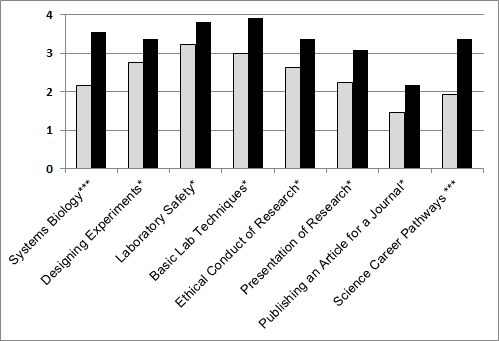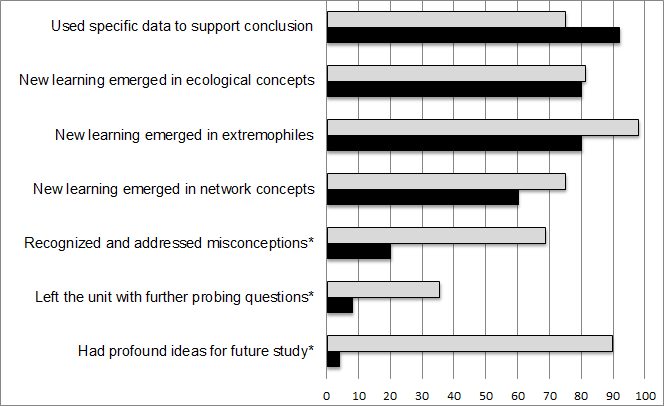Summary Evaluation Report – 2013
Prepared by Dina Kovarik1 MS, PhD and Claudia Ludwig1 MEd through input by Laura Collins2 PhD
1 Institute for Systems Biology, 2 Center for Research and Learning
Each summer, ISB hosts the SEE program to provide research experiences for high school students. Students are typically on-site 5 to 9 weeks, depending on their summer schedules. From 2008-2010, the NIH/NIGMS grant (2P50 GM076547) funded externally evaluation of the SEE program through the Center for Research and Learning. Students completed pre/post surveys designed to gather information on demographics, perceptions of experiences, and effect of the experience on skills, career interests, and confidence. Each year, the program successfully recruits diverse students through partnerships with diversity experts such as University of Washington (UW)-MESA, Making Connections at the UW Women’s Center and Rainier Scholars. Since 2008, 50-100% of interns each year have been female, more than 50% were races other than White/Caucasian, and many will be the first in their family to go to college. Each summer, interns made statistically significant self-reported gains in their knowledge of systems biology, research design and techniques, methods of reporting findings, and career pathways related to systems biology. Figure 1 shows combined data for 2008-2010 interns.
According to the external evaluator, students were very positive about the program, and all would recommend the program as a valuable experience for other students. Furthermore, the experience contributed positively to students’ self-confidence. Students enjoyed their day-to-day experiences and liked being part of a team. They indicated that they received enough assistance and that their mentors helped them understand how their work contributed to research in the field. They were also able to apply concepts that they had learned in their school classrooms. Of primary importance is that students felt that their participation in the experience increased their interest in doing research in the future. One student commented:
“I never thought that research was the right path for me but because I enjoyed my time at ISB so much I’m rethinking whether a research scientist is really unsuitable for me.”

Figure 1: Intern survey responses pre-internship (gray, N=13) and post-internship (black, N=11). Students were asked to rate how much they know about each category on a scale from 1 (“hardly anything”) to 4 (“lots”). *** p < 0.001, * p < 0.05.
Through engaging and innovative experiences, the ISB high school student program provides a unique educational opportunity for these students. The findings suggest that students gained knowledge and skills, and were able to make connections between their classroom learning and research practices. Significant to the outcomes is that the experience contributed to students’ self-confidence and made possible a career in the sciences. Program leaders are encouraged to continue to provide a strong program of research experiences for high school students.
SEE Impacts on Student Learning: Results from Two Learning Environments
Each of the SEE modules is developed through a partnership of educators, high school interns, and ISB scientists in an iterative “develop, field test, refine” process. Embedded pre/post-instruction content assessments are used by teachers to assess student learning. A subset of these assessments is returned to SEE staff and the curriculum development team to inform program refinement. Figure 2 shows data illustrative of the impact of SEE modules on student learning from the 2009-2010 field testing of the Ecological Networks module in two distinct learning environments: a 9th grade General Biology class and an Alternative Credit Retrieval Program (i.e., at-risk students who have failed to thrive in a traditional academic environment). Students in both environments made substantial progress in meeting learning objectives, especially in using data to support conclusions. As one SEE teacher noted:
“This program addresses critical biological concepts and challenges my students to think, ask questions, and refine their understanding of the scientific process.”

Figure 2: Percentage of students meeting learning objectives in 9th grade General Biology (gray, N=48) and an Alternative Credit Retrieval Program (black, N=25). * Denotes metacognitive component not emphasized in class assessments in Alternative Credit Program.
